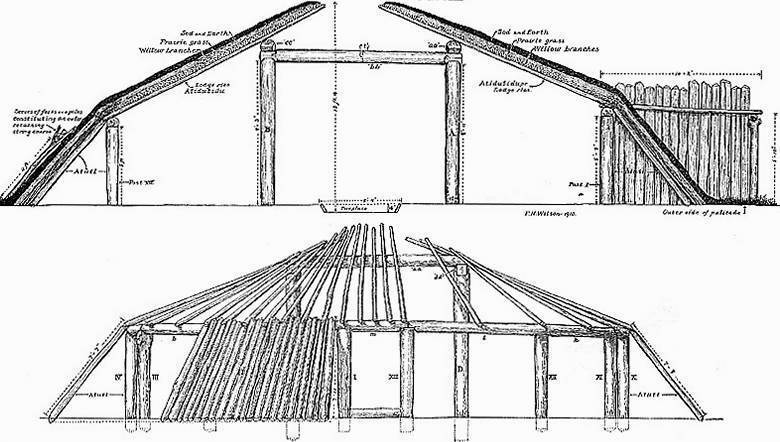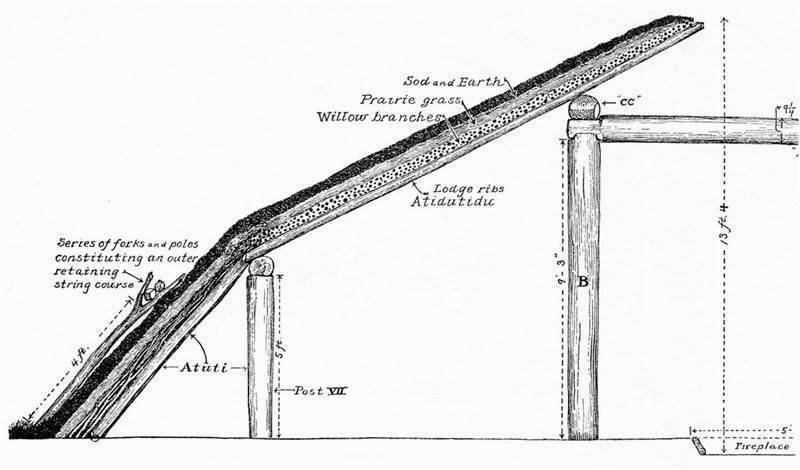V 03 |
Hidatsa, Mandan and Arikara earth lodges |
type |
|
place |
|
population |
The prairie dwellers, including the Hidatsa, Mandan and Arikara nations only lived for part of the year in tipis, during the buffalo hunting season, and even then it was only the men. The rest of the tribe cultivated crops, primarily corn, and lived all year round in earth lodges which ensured quite constant air temperatures. The 12-15 metre diameter circular structures were typically home to 15-25 people with several generations living under one roof along with their horses and dogs when the weather was bad. There were also much smaller, more easily heated houses for fewer people and large, 18 metre long communal buildings.
The women’s work was not only agriculture but also building. Building each house required the felling and seasoning of at least one hundred trees, the collection of large quantities of grass, turf bricks and twigs When the materials were ready a one metre deep pit was excavated on the site of the house, posts were set into holes in the ground and beams put in place and everything was covered in a thick layer of logs laid diagonally. This was then coated in a thick layer of twigs, prairie grass, turf blocks and finally earth. Twigs, stalks, and buffalo hide rope was used to connect the pieces.
A 60-90 cm wide hole was left in the roof to let in light and let out smoke, the sides of which were daubed in clay to stop it from burning. Finally a 30 centimetre deep pit was dug in the middle of the floor as a fireplace. Building an earth lodge took less than a week but the structure rotted over time so they had to be replaced every 6-10 years.
Villages comprised earth lodges and some roofs to provide shade, and did not always have a communal building. In the north of the territory wooden palisades and moats surrounded the villages.
Between 1837 and 1840 almost 90% of the Hidatsa, Mandan and Arikara died of smallpox and the remainder emigrated but traces of their earth lodges can still be seen today, 170 years later.
(Knife River Indian Villages National Historic Site)





